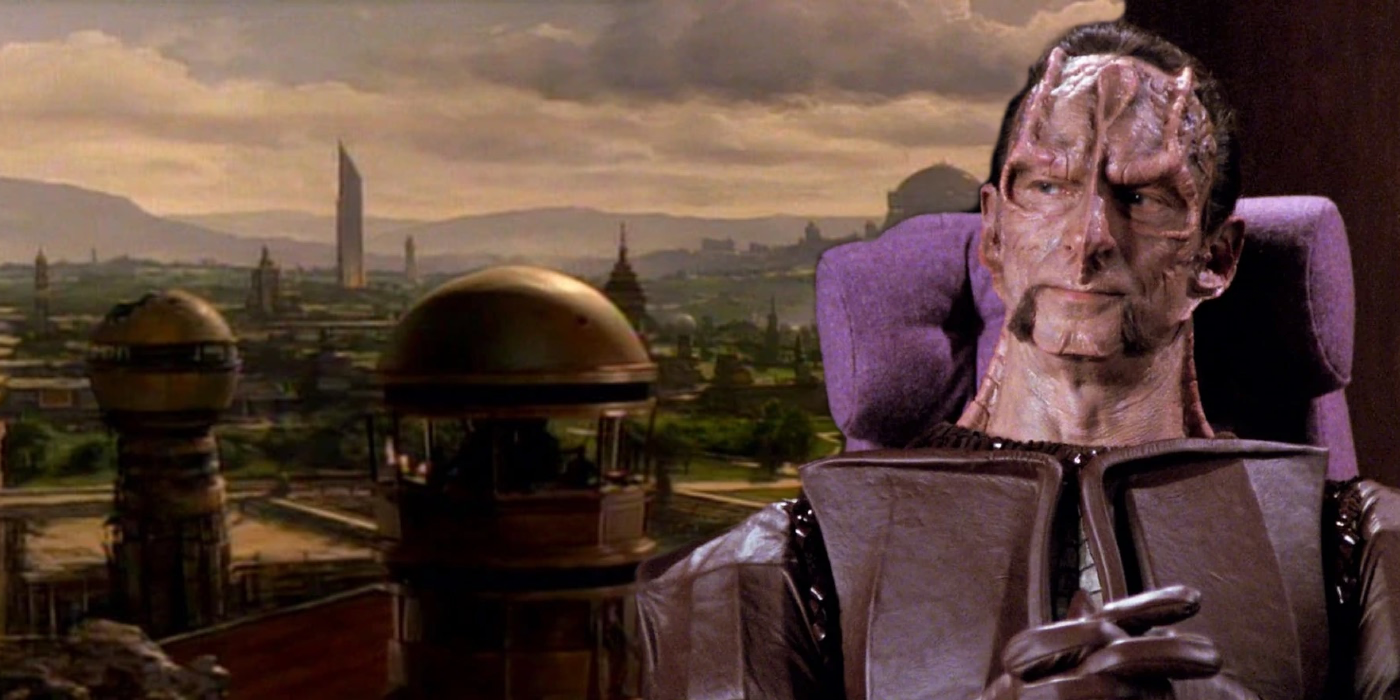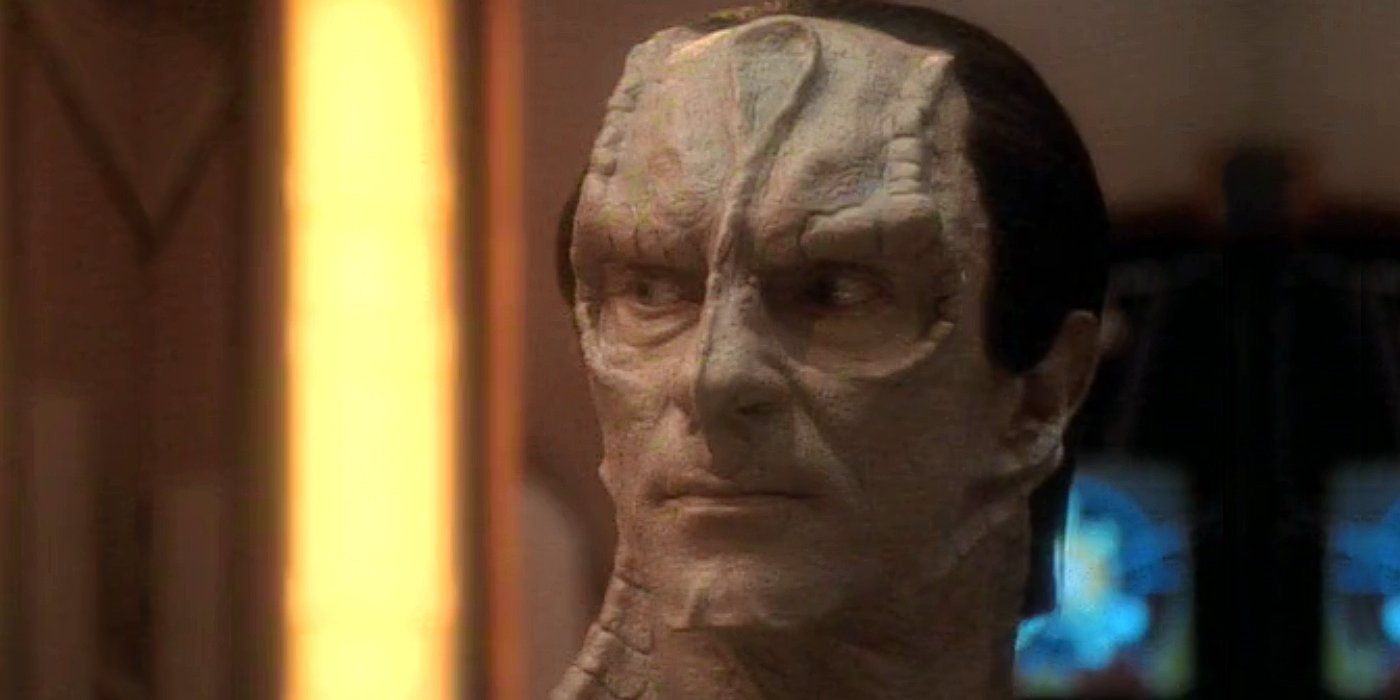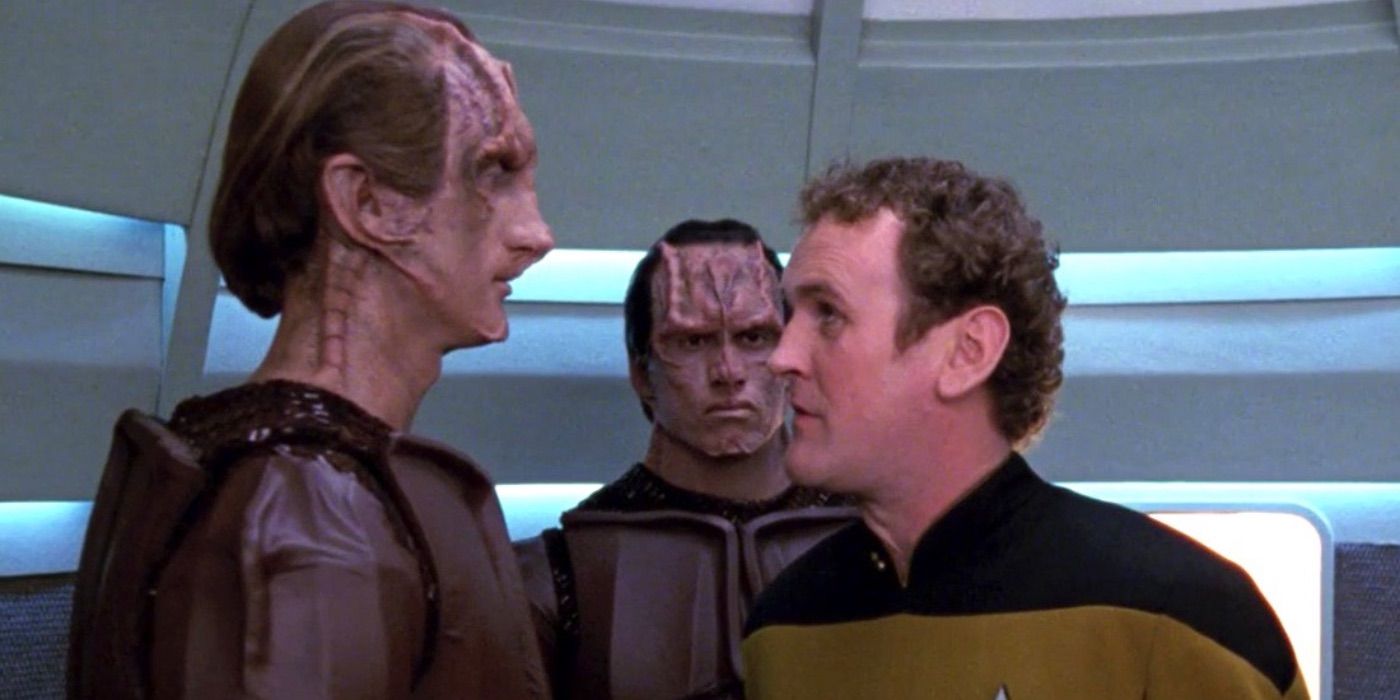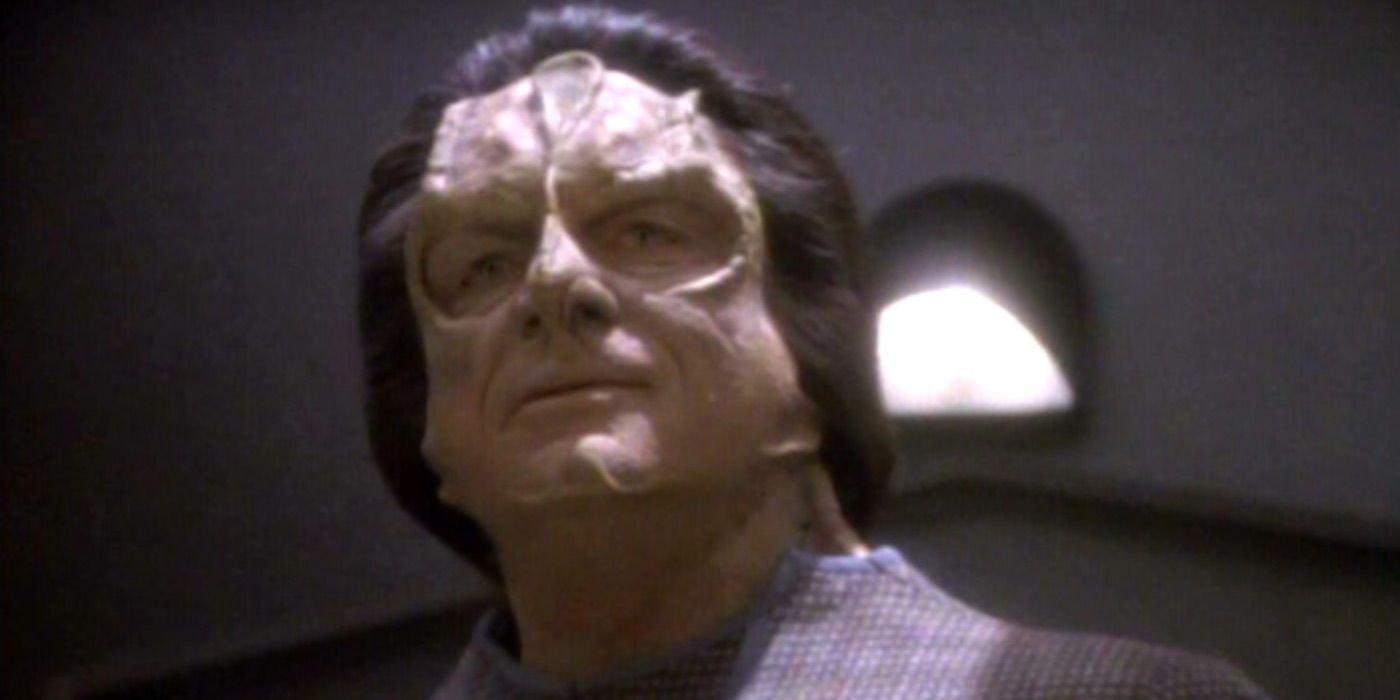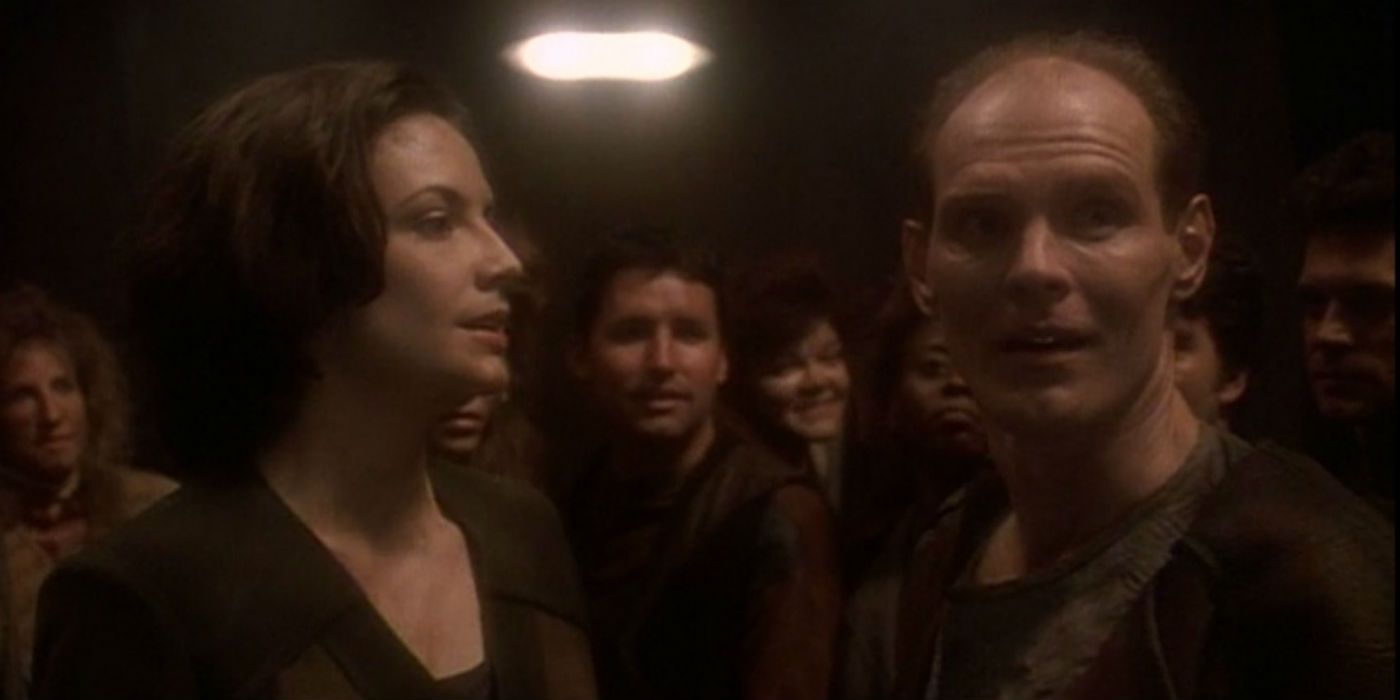The Cardassian Occupation of Bajor showed the darker side of the Star Trek universe, but its history was actually quite complicated. Starting when the Cardassian Empire seized control of the peaceful planet of Bajor, the Occupation completely changed the trajectory of the planet and the Federation as well. The Occupation showed that the Federation's ideals of peace and harmony weren't shared by all, but Starfleet's inactivity was also a dark mark on their history. Though the Occupation did eventually end, the repercussions continued to rock the Alpha Quadrant for decades after the Cardassians withdrew from Bajor and was one of the defining storylines of Star Trek: Deep Space Nine.
As seen in Bajoran characters like Ro Laren and Kira Nerys, the Cardassian Occupation changed the makeup of the Bajoran people, and they were forced into militaristic resistance. It's a fascinating time in Star Trek history because it was one of the few major events that happened outside the purview of the Federation, and showed they weren't perfect. Star Trek was always a moralistic franchise, but the Cardassians' activity on Bajor showed that gray areas could exist in the black-and-white world of the final frontier. It also opened the door for a plethora of amazing stories as Bajor attempted to pick up the pieces after years of tyranny.
The Cardassians Occupied Bajor To Exploit Their Resources
Though the exact start date was never established in the canon, the Cardassian Occupation essentially began in the year 2319 when the powerful alien race known as the Cardassians began installing a presence on the peaceful planet of Bajor. Initially cordial in their dealings, the Cardassians grew bolder and bolder with their incursions until they began a more forceful military presence in the year 2338. The Cardassian Empire sustained itself by conquering planets in order to exploit their natural resources, and Bajor was yet another victim to fall to their vampiric imperial tactics. Unfortunately for the Bajorans, the start of the Occupation was met with little notice from the galaxy-at-large.
Before the arrival of the Cardassians, the Bajorans were an entirely peaceful people, a trait that made them easy prey for the Occupation. Renowned for their artistry, architecture, and spirituality, the Bajorans were forced to abandon many of the guiding principles of their Prophets when fighting off their colonizers. Subjected to brutal forced labor and mass executions, the people of the planet were eventually exploited as a resource as rich as the minerals underground. This terrible treatment solidified the resistance against the Occupation, and many of Bajor's people were forced into a life of conflict to win their freedom.
The Federation Didn't Directly Interfere With The Occupation
Though they positioned themselves as keepers of peace throughout the galaxy, the Federation's principle of non-interference offered little to no help to the Bajoran people for almost five decades. The Federation itself engaged in a prolonged conflict with the Cardassians between the 2340s and 2360s, yet they were not involved with the Occupation in any way. Presumably, being at odds with the Cardassians would have made a diplomatic solution to the Occupation very difficult, but their inaction was a driving force behind Bajor not joining the Federation. Even though they were engaged in war, the Federation still made no move to stop the injustice that was happening to the Bajorans.
The driving force behind Starfleet's lack of motivation was the fact that it would have violated their Prime Directive to get involved. While the Prime Directive was mostly cited to stop interference with pre-warp civilizations, it also prohibited Starfleet from interfering with the political workings of any planet, regardless of their warp capabilities. Since Cardassia claimed Bajor as a conquered territory, it technically made it off-limits for involvement, though the injustice of the situation was known to Starfleet's top brass. Captain Kirk would have violated the Prime Directive to save the day, but most Starfleet officers toed the line.
The Occupation Ended When It Was No Longer Profitable
As shown by the smug demeanor of most Cardassian characters in Star Trek: Deep Space Nine, the Occupation's eventual collapse was hardly viewed as a failure by the Cardassian population at large. Cardassians didn't view the end of the Occupation as defeat, but as a strategic withdrawal when the venture was no longer worth the risk. No single factor was the exact reason the withdrawal took place, but it actually took a series of pressures for the Cardassians to finally end their half-century of terror on Bajor. Even if the Federation was too late, they did actually play a part in the ending of the story along with the resistance.
The Cardassians were essentially DS9's classic villains for the entire series, and their constant reappearance on the station offered clues as to why the Occupation came crashing down. The truth rested somewhere between the official Cardassian story of "strategic withdrawal" and the Bajoran tales of glory, and the Federation was owed a small piece of credit as well. Even after the war between them ended, the Federation continued to put pressure on the Cardassians whenever they attempted to assert themselves outside their territory. Even if they weren't pressuring the Cardassians to withdraw from Bajor, they did force them to spread their empire too thin, which weakened the Occupation.
While the Federation was fighting its war against Cardassia, the Bajorans had assembled an effective resistance movement that had been able to vex the Cardassians to the point of making the Occupation an unprofitable enterprise. With a formerly peaceful populace in revolt, the overwhelming military might of the Cardassians was no match for the tenacious fighting of the Bajoran guerillas, and things began to slip out of control for the occupiers. With losses looming and financial ruin imminent, the Cardassians who were in favor of the Occupation began to feel pressure from their own government to withdraw, which was the final nail in the coffin by 2369.
The Aftermath Of The Resistance
Unfortunately for the Bajorans, the end of the Occupation was hardly the end of the fallout from the Cardassians on Bajor. Though they had formed an elite resistance, the militaristic mindset that they had to adopt wouldn't simply go away once the Cardassians departed. The return of Major Kira in Star Trek: Lower Decks showed just how much of an emotional impact the resistance had on all Bajorans, and their post-Occupation provisional government was rife with infighting and xenophobia. Not without due cause, many Bajorans viewed the Federation suspiciously, and that suspicion equated them to a new form of occupier.
As illustrated by the appearance of the Maquis, a terrorist organization made up of former Federation colonists who resisted the Cardassians, the guerilla mindset could often be indiscriminate and cause more harm than good. The political struggles of the Bajorans in the post-Occupation years put them at high risk of completely collapsing, and the Cardassians were able to inflict damage despite being withdrawn. Fortunately, the ending of Star Trek's DS9 series offered a shimmer of hope as Major Kira took her rightful place as commander of the space station to usher in a new era for Bajor.

